Abstract
The mechanism by which the osmotic pressure increases in tubular fluid along the descending limb of the loop of Henle was examined in Psammomys undergoing salt diuresis. In two series of experiments, micropuncture samples were collected either from proximal and distal convolutions at the surface of the cortex, or from loops of Henle and collecting ducts at the surface of the extrarenal part of the papilla. Inulin-3H, urea-14C, Na+, and K+ concentrations, as well as osmotic pressure, were determined in all micropuncture samples.
Net movements of water along the descending and ascending limbs of the loop could not be deduced by comparing inulin data obtained from convoluted tubules and from loops of Henle, since there appeared to be a large difference in the filtration rate of the superficial glomeruli (9 nl/min) and the deep ones (21.4 nl/min) under the conditions of these experiments.
The results indicate that no large net movement of water occurred along the loop since a) only 23% of the filtrate was reabsorbed along the loop of Henle (including pars recta) of superficial nephrons despite the fact that all these loops reached markedly hypertonic regions; b) there was no positive correlation between (F/P)In in early distal samples and the simultaneous osmotic pressure of the urine; c) when (F/P)In and (F/P)Osm in loop samples were correlated, the increase in inulin concentration accounted only for 15% of the increase in osmotic pressure. Therefore, 85% of the concentrating process taking place along the descending limb must have resulted from net addition of solutes; this was directly supported by Na+ and K+ measurements in the loop samples, which showed that, at the tip of the loops, the Na+ and K+ flow rates were correlated to the osmotic pressure. Moreover, since the load of Na+ urea flow rate in superficial early distal tubules was constant and independent of the urinary osmotic pressure, it is suggested that a medullary recycling of both ions occurred between ascending and descending limbs.
Urea-14C concentration in the loop samples indicates a net addition of urea into the descending limb; the mean and K+ delivered to the distal superficial tubules was 4.18 times its filtration rate, suggesting a recycling of urea from collecting ducts to Henle's loops. The permeability properties of the wall of the thin descending limb are discussed in relation to the obtained results.
Full text
PDF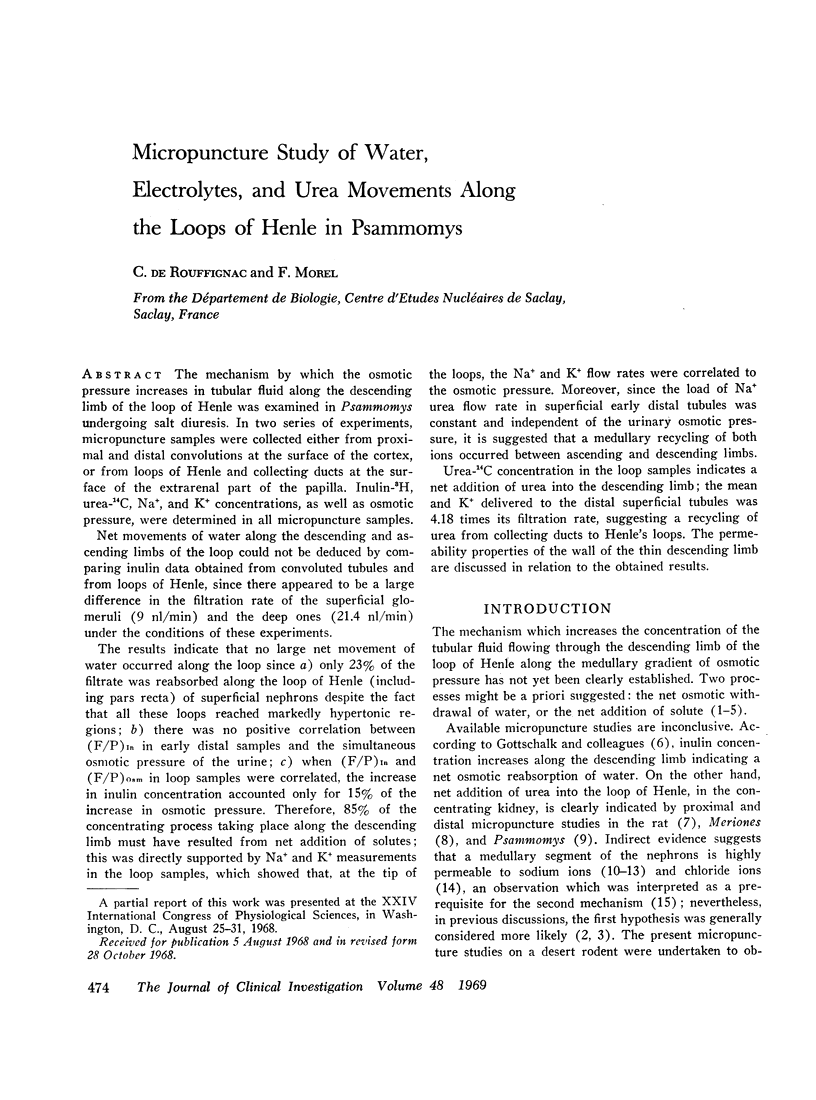
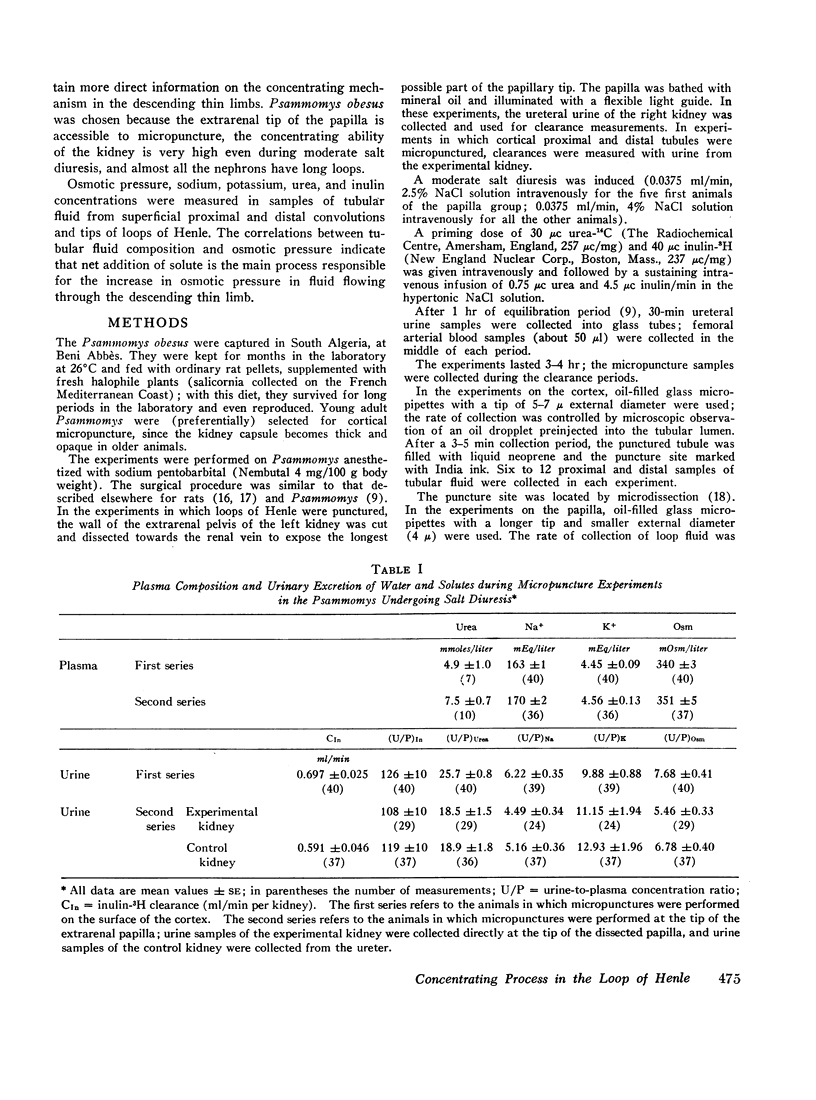
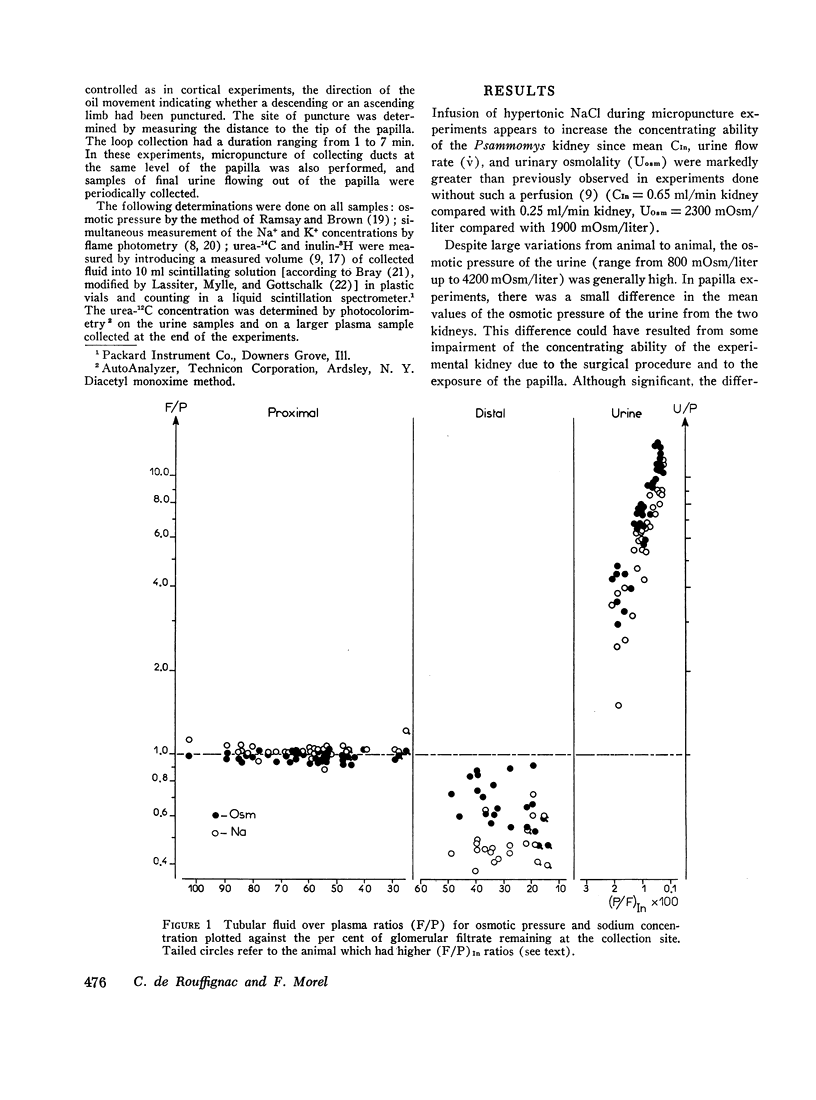
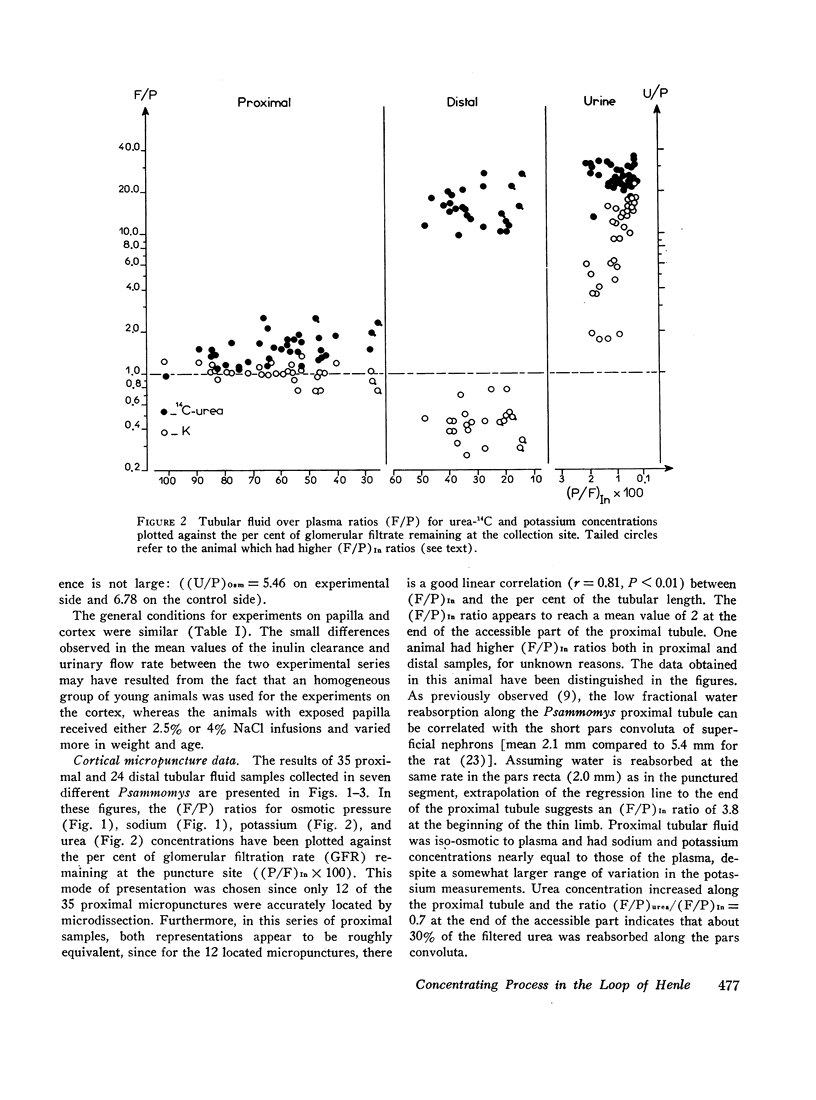
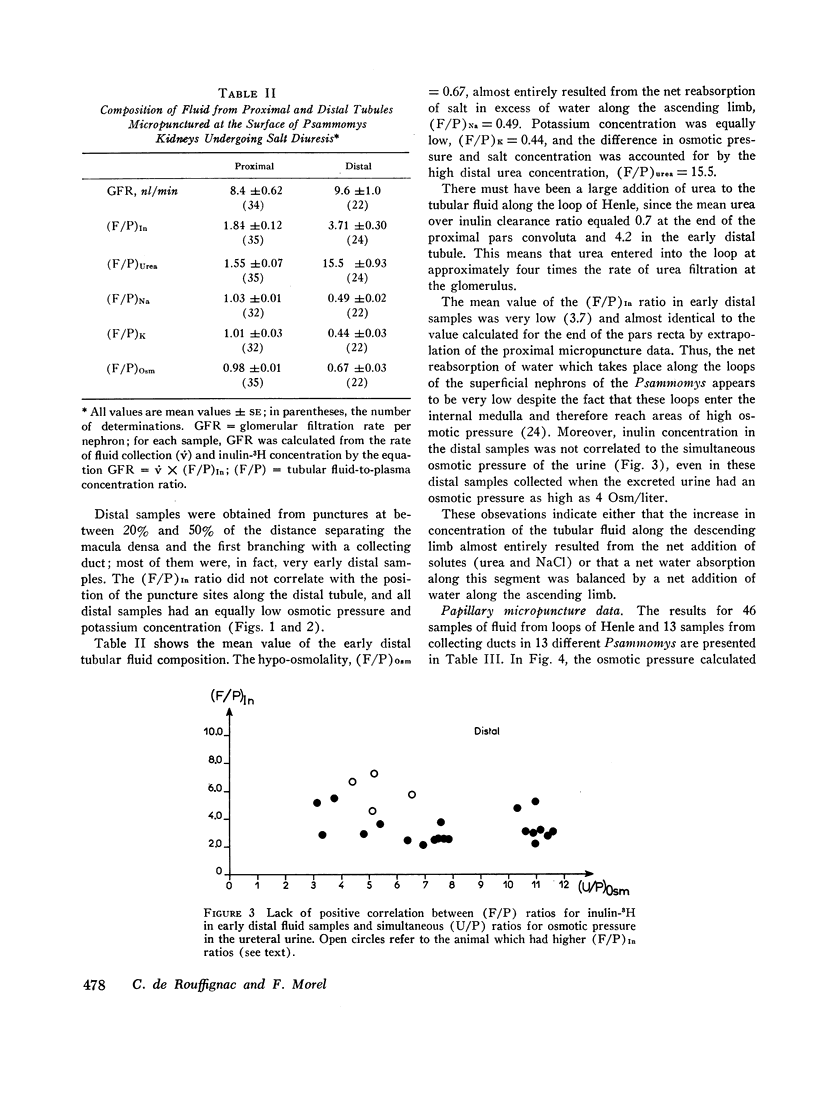
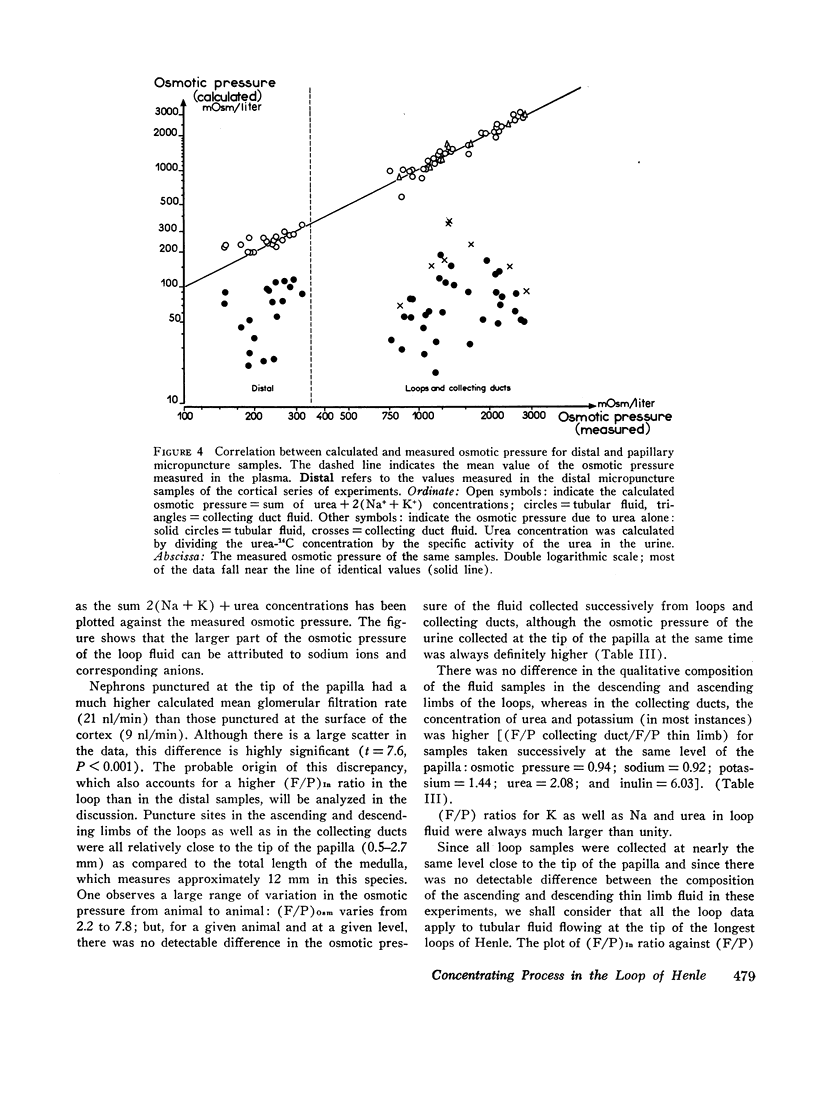
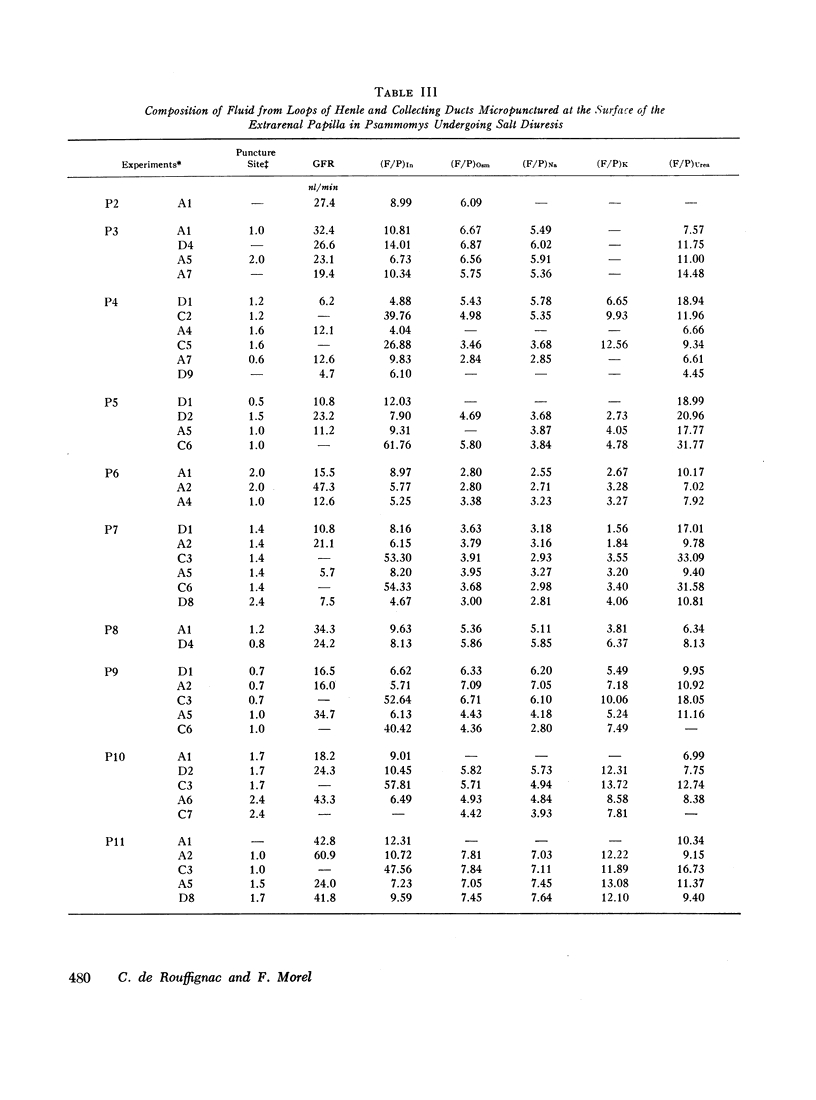
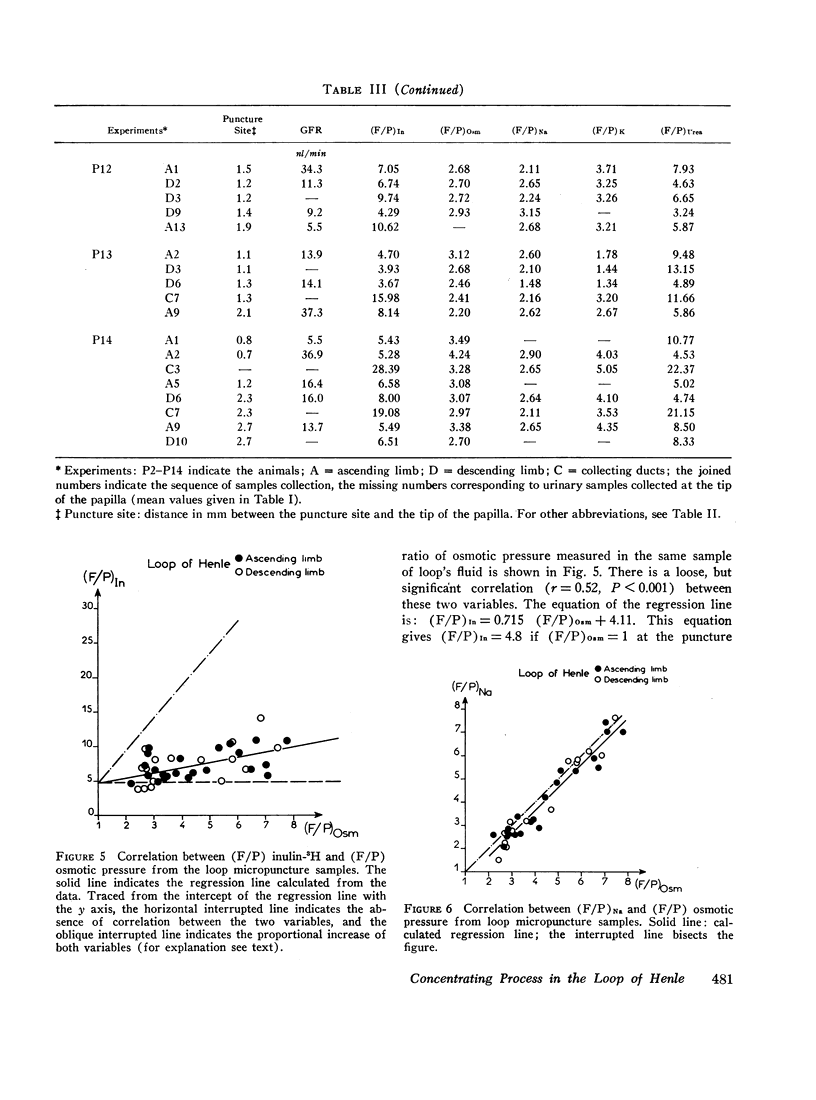
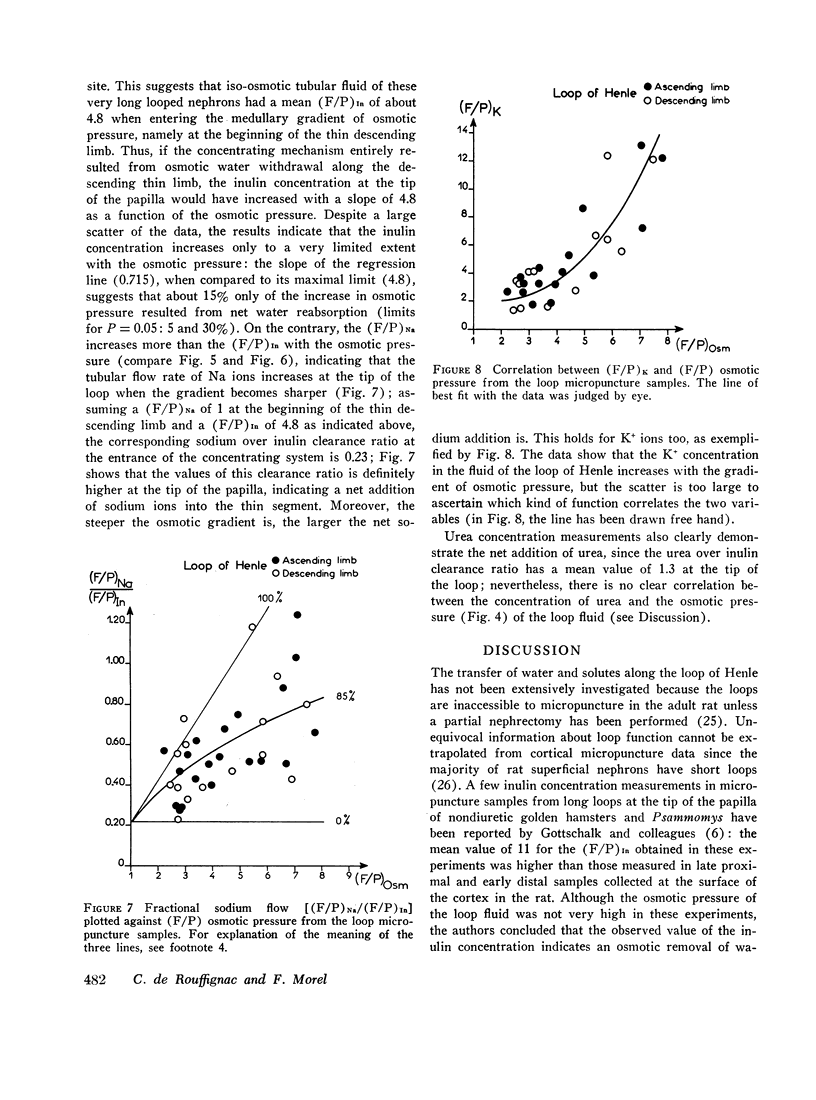
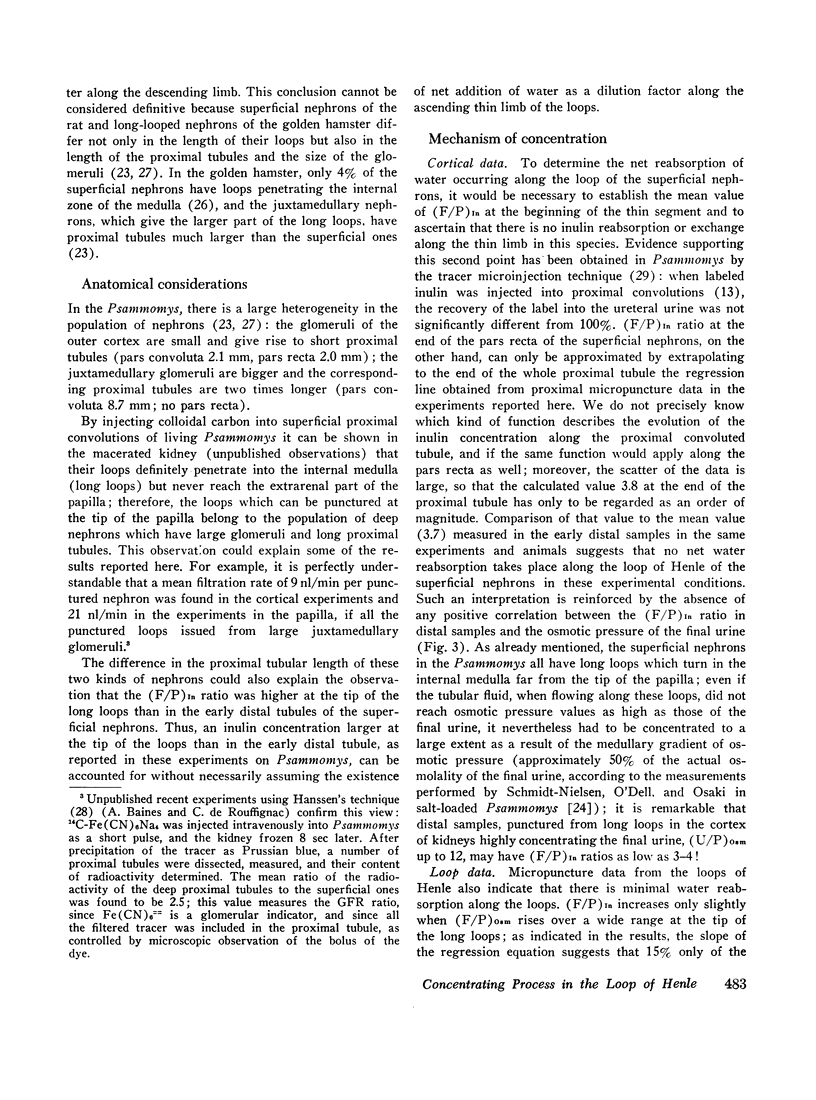
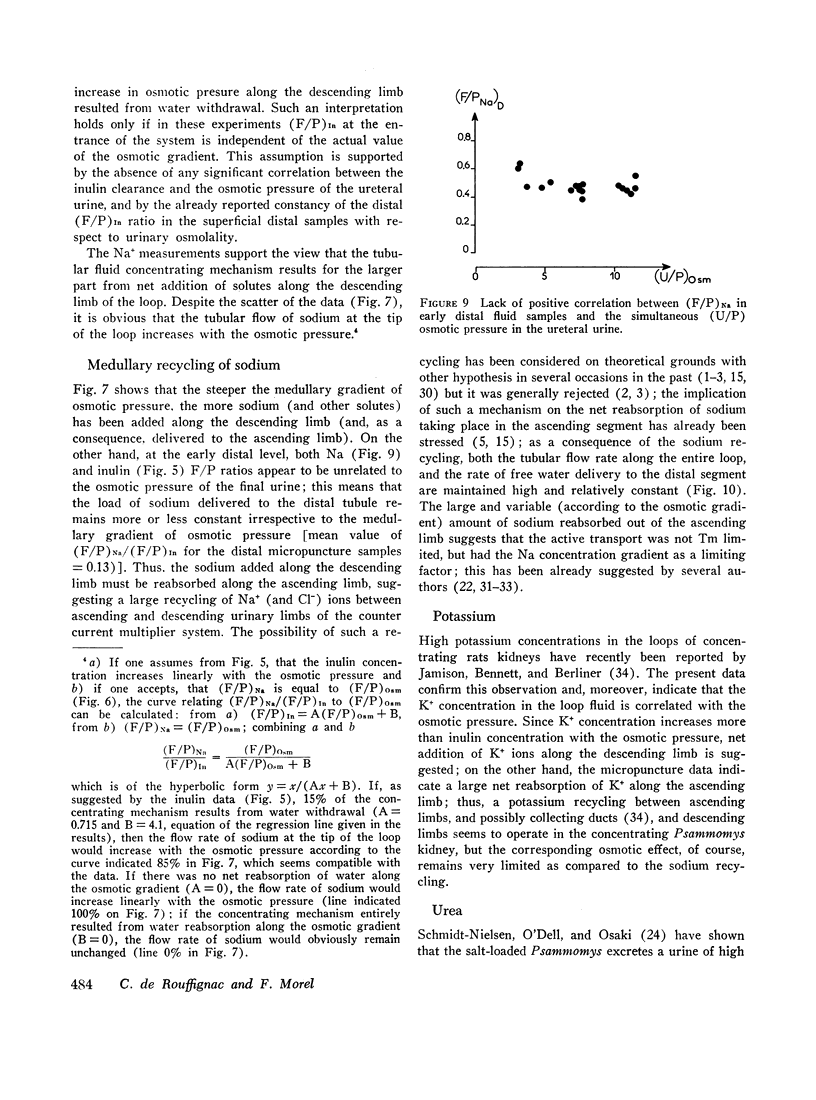
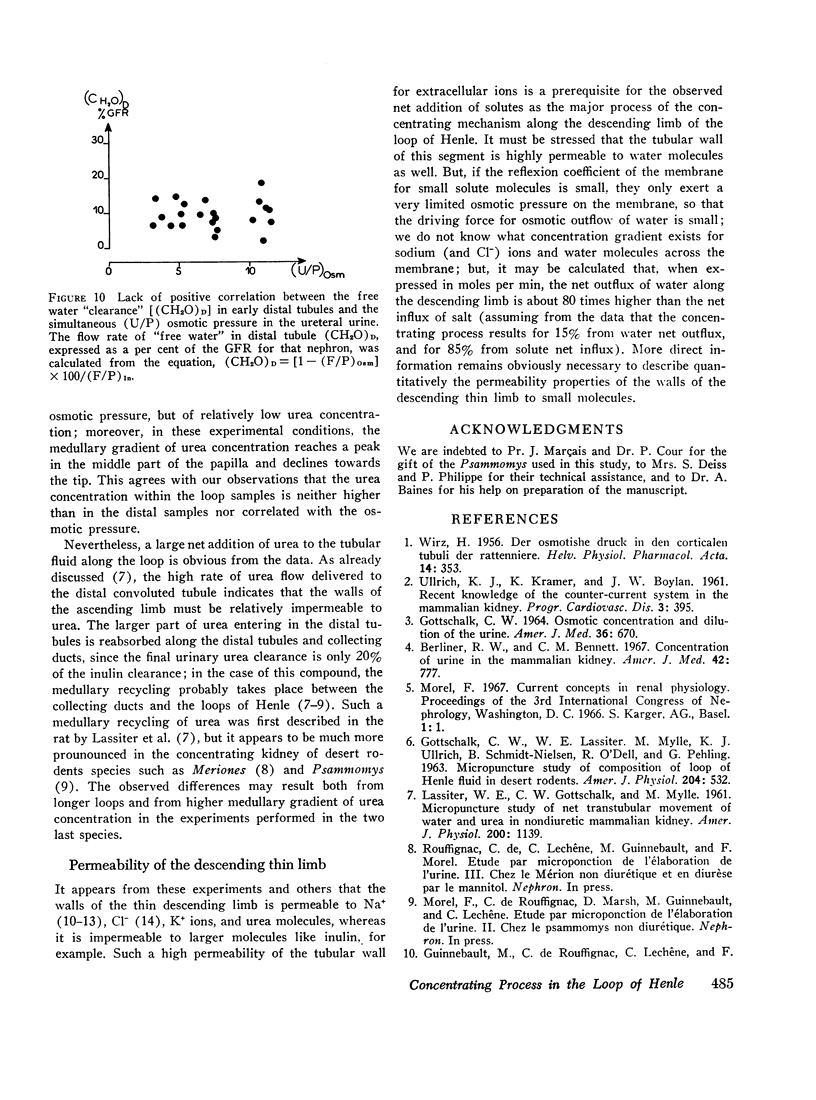
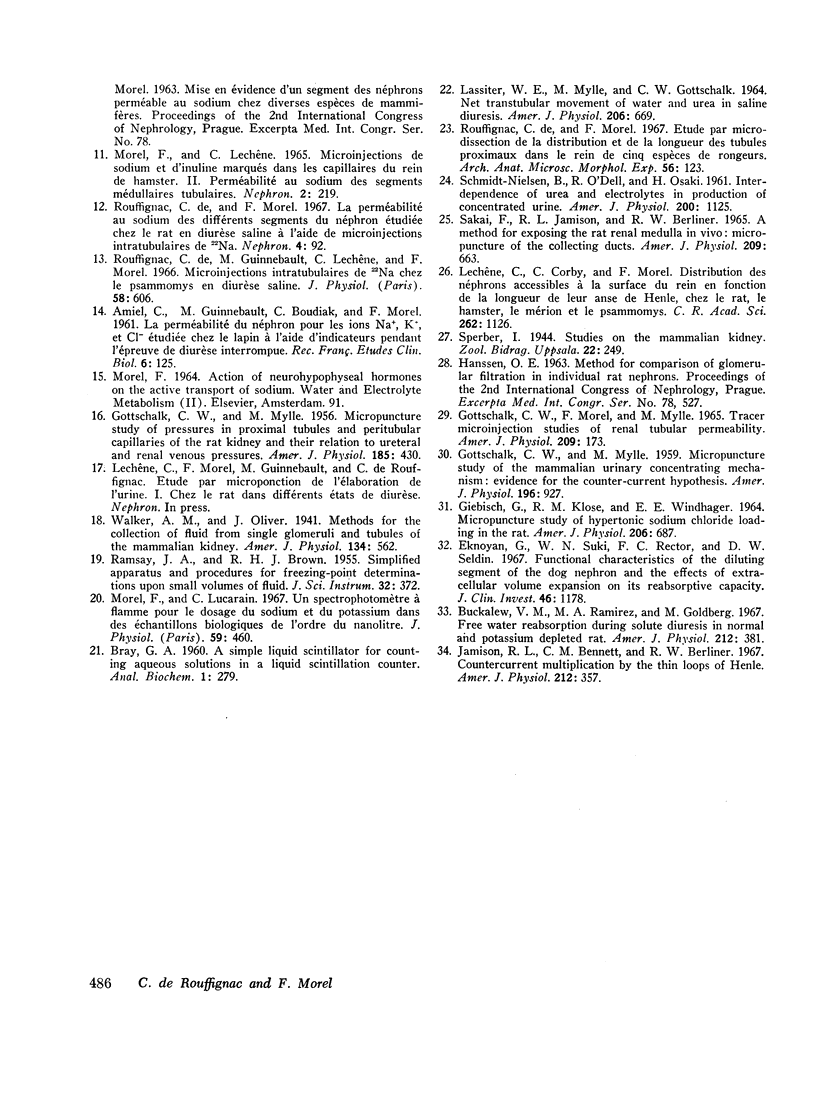
Selected References
These references are in PubMed. This may not be the complete list of references from this article.
- Berliner R. W., Bennett C. M. Concentration of urine in the mammalian kidney. Am J Med. 1967 May;42(5):777–789. doi: 10.1016/0002-9343(67)90095-2. [DOI] [PubMed] [Google Scholar]
- Buckalew V. M., Jr, Ramirez M. A., Goldberg M. Free water reabsorption during solute diuresis in normal and potassium-depleted rats. Am J Physiol. 1967 Feb;212(2):381–386. doi: 10.1152/ajplegacy.1967.212.2.381. [DOI] [PubMed] [Google Scholar]
- Eknoyan G., Suki W. N., Rector F. C., Jr, Seldin D. W. Functional characteristics of the diluting segment of the dog nephron and the effect of extracellular volume expansion on its reabsorptive capacity. J Clin Invest. 1967 Jul;46(7):1178–1188. doi: 10.1172/JCI105611. [DOI] [PMC free article] [PubMed] [Google Scholar]
- GIEBISCH G., KLOSE R. M., WINDHAGER E. E. MICROPUNCTURE STUDY OF HYPERTONIC SODIUM CHLORIDE LOADING IN THE RAT. Am J Physiol. 1964 Apr;206:687–693. doi: 10.1152/ajplegacy.1964.206.4.687. [DOI] [PubMed] [Google Scholar]
- GOTTSCHALK C. W., LASSITER W. E., MYLLE M., ULLRICH KJ SCHMIDT-NIELSEN B., O'DELL R., PEHLING G. Micropuncture study of composition of loop of Henle fluid in desert rodents. Am J Physiol. 1963 Apr;204:532–535. doi: 10.1152/ajplegacy.1963.204.4.532. [DOI] [PubMed] [Google Scholar]
- GOTTSCHALK C. W., MOREL F., MYLLE M. TRACER MICROINJECTION STUDIES OF RENAL TUBULAR PERMEABILITY. Am J Physiol. 1965 Jul;209:173–178. doi: 10.1152/ajplegacy.1965.209.1.173. [DOI] [PubMed] [Google Scholar]
- GOTTSCHALK C. W., MYLLE M. Micropuncture study of pressures in proximal tubules and peritubular capillaries of the rat kidney and their relation to ureteral and renal venous pressures. Am J Physiol. 1956 May;185(2):430–439. doi: 10.1152/ajplegacy.1956.185.2.430. [DOI] [PubMed] [Google Scholar]
- GOTTSCHALK C. W., MYLLE M. Micropuncture study of the mammalian urinary concentrating mechanism: evidence for the countercurrent hypothesis. Am J Physiol. 1959 Apr;196(4):927–936. doi: 10.1152/ajplegacy.1959.196.4.927. [DOI] [PubMed] [Google Scholar]
- GOTTSCHALK C. W. OSMOTIC CONCENTRATION AND DILUTION OF THE URINE. Am J Med. 1964 May;36:670–685. doi: 10.1016/0002-9343(64)90179-2. [DOI] [PubMed] [Google Scholar]
- Jamison R. L., Bennett C. M., Berliner R. W. Countercurrent multiplication by the thin loops of Henle. Am J Physiol. 1967 Feb;212(2):357–366. doi: 10.1152/ajplegacy.1967.212.2.357. [DOI] [PubMed] [Google Scholar]
- LASSITER W. E., GOTTSCHALK C. W., MYLLE M. Micropuncture study of net transtubular movement of water and urea in nondiuretic mammalian kidney. Am J Physiol. 1961 Jun;200:1139–1147. doi: 10.1152/ajplegacy.1961.200.6.1139. [DOI] [PubMed] [Google Scholar]
- LASSITER W. E., MYLLE M., GOTTSCHALK C. W. NET TRANSTUBULAR MOVEMENT OF WATER AND UREA IN SALINE DIURESIS. Am J Physiol. 1964 Apr;206:669–673. doi: 10.1152/ajplegacy.1964.206.4.669. [DOI] [PubMed] [Google Scholar]
- Morel F., Lechène C. Microinjections de sodium et d'inuline marqués dans les capillaires du rein de hamster. II. Perméabilité au sodium des segments tubulaires médullaires. Nephron. 1965;2(4):219–229. doi: 10.1159/000179405. [DOI] [PubMed] [Google Scholar]
- Morel F., Lucarain C. Un spectrophotomètre à flamme pour le dosage du sodium et du potassium dans des échantillons biologiques de l'ordre du nanolitre. J Physiol (Paris) 1967;59(4 Suppl):460–461. [PubMed] [Google Scholar]
- SCHMIDT NIELSEN B., O'DELL R., OSAKI H. Interdependence of urea and electrolytes in production of a concentrated urine. Am J Physiol. 1961 Jun;200:1125–1132. doi: 10.1152/ajplegacy.1961.200.6.1125. [DOI] [PubMed] [Google Scholar]
- Sakai F., Jamison R. L., Berliner R. W. A method for exposing the rat renal medulla in vivo: micropuncture of the collecting duct. Am J Physiol. 1965 Sep;209(3):663–668. doi: 10.1152/ajplegacy.1965.209.3.663. [DOI] [PubMed] [Google Scholar]
- ULLRICH K. J., KRAMER K., BOYLAN J. W. Present knowledge of the counter-current system in the mammalian kidney. Prog Cardiovasc Dis. 1961 Mar;3:395–431. doi: 10.1016/s0033-0620(61)80001-7. [DOI] [PubMed] [Google Scholar]
- WIRZ H. Der osmotische Druck in den corticalen Tubuli der Rattenniere. Helv Physiol Pharmacol Acta. 1956;14(3):353–362. [PubMed] [Google Scholar]
- de Rouffignac C., Morel F. Etude par microdissection de la distribution et de la longueur des tubules proximaux dans le rein de cinq espèces de rongeurs. Arch Anat Microsc Morphol Exp. 1967 Apr-Jun;56(2):123–132. [PubMed] [Google Scholar]


